Section IV - Performance
Gaming
Gaming as a test of motherboard performance is sort of a joke these days. The big player in the gaming arena is the GPU. Everyone but a few hardcore PR teams know this. However, it is important to run at least a few (one from each current DX version) to see if there are any issues with the combination of components on a motherboard. These are items like Audio lag, memory lag and of course problems with the PCIe lanes and signal traces. If there are issues in design, drivers or BIOS then you can have odd gaming performance. So without much more preamble let’s dive into the three games we currently use; Call of Duty Modern Warfare 2 for DX9 FarCry 2 for DX10 and Battlefield Bad Company 2 for DX11.
Call of Duty Modern Warfare 3 DX9 -
As the third installment in the Modern Warfare franchise you are picking up some old roles while adding a couple of new ones as well. The game play is almost identical to what you are used to in Modern Warfare 2 as are the graphical settings. The AI is a little different thought it is still similar to the bar fight style AI we like in the Call of Duty series. For our testing we run the first mission (Black Tuesday) from start to finish. Settings are shown below
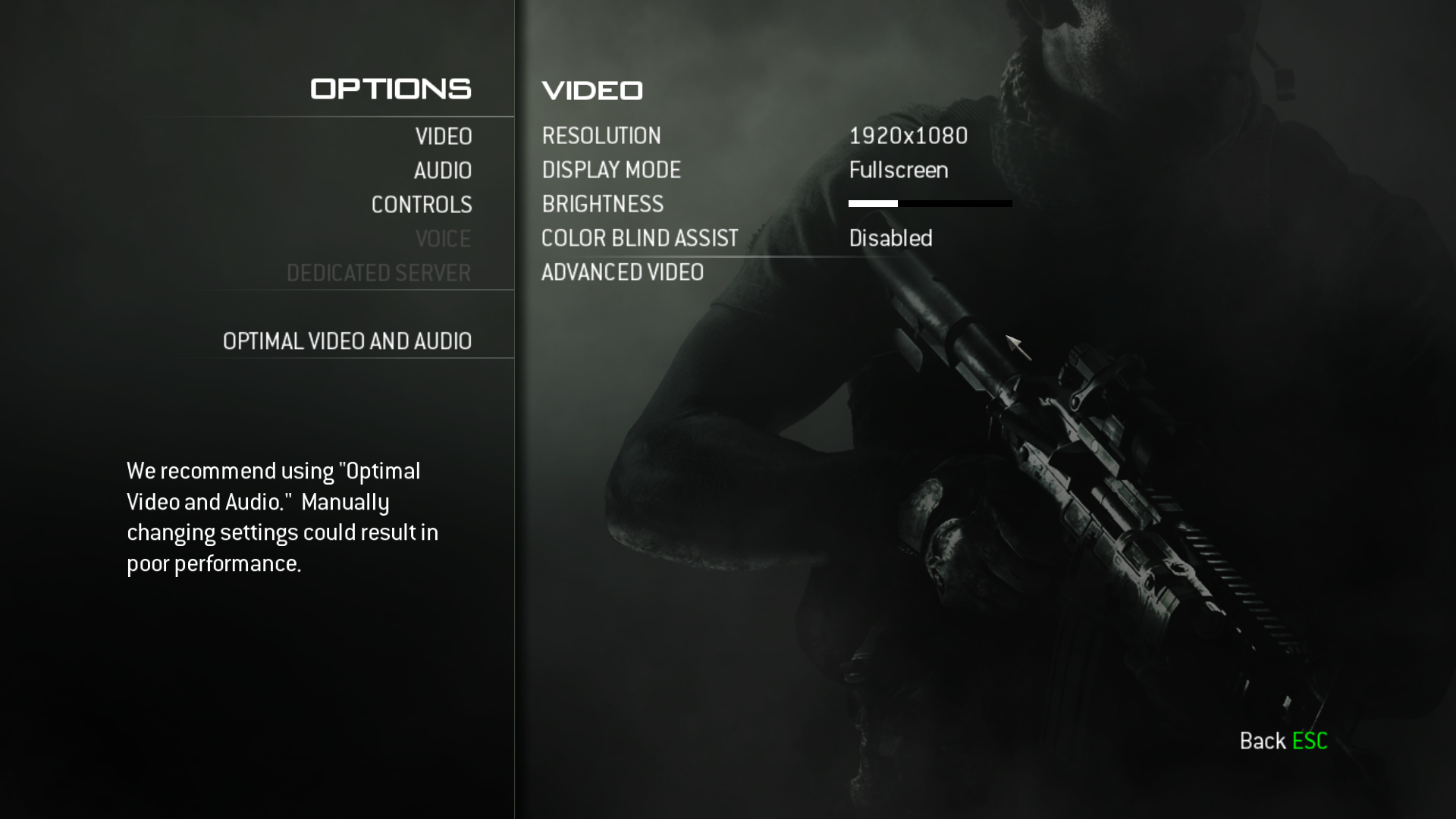 |
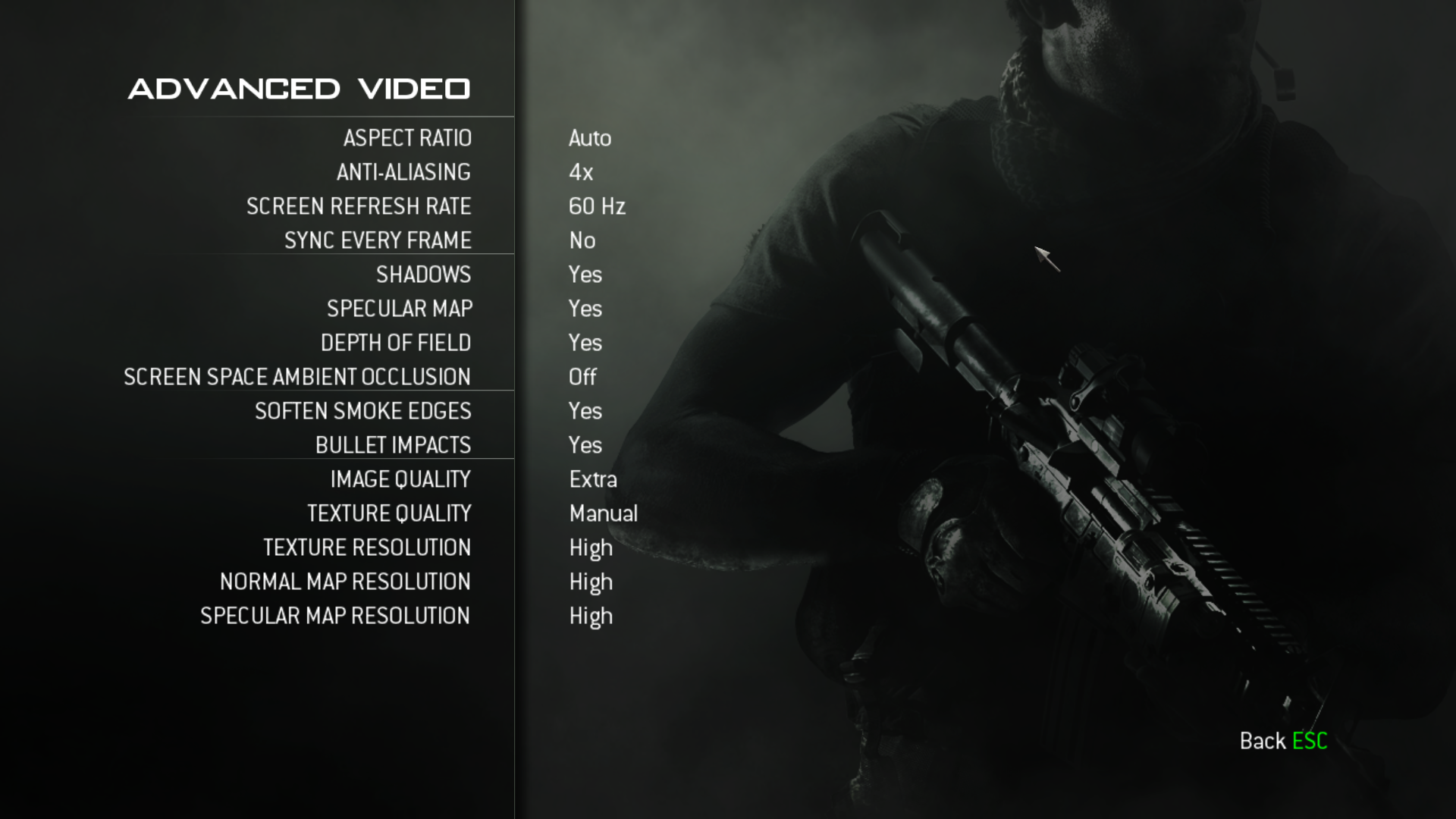 |

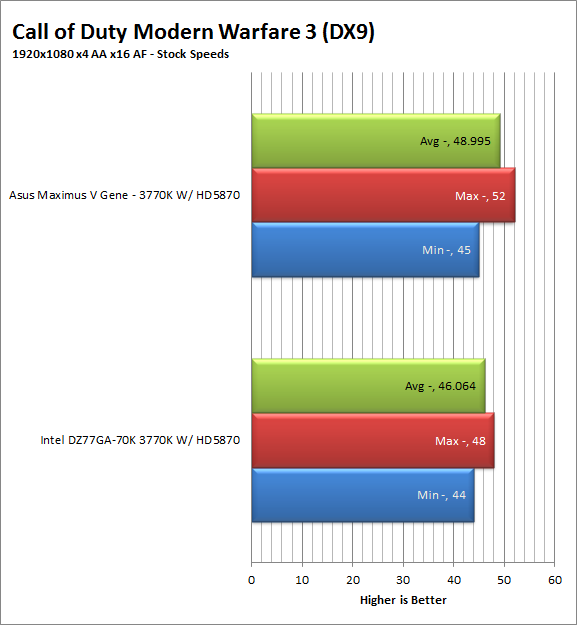
Gaming under the GMA 4000 was not as bad as we expected. The engine in Modern Warfare 3 is not that rough on a system (although it can be at times). We were able to get some decent minimum frame rates and the average FPS was more than acceptable. Gaming with the HD5870 showed the type of gaming you can expect with the Maximus V Gene and a good add-in GPU.
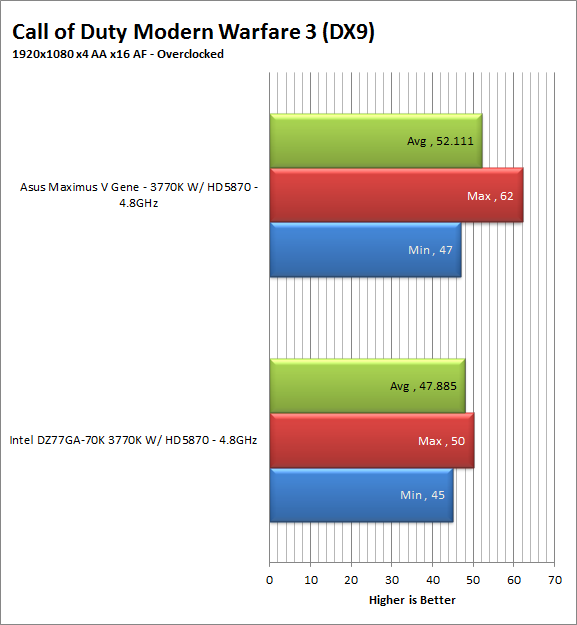
FarCry2 DX10 -
Although not one of my favorite games this tedious game does have some good graphics. The large sandbox style of the game lends to mission based play. The only problem is that the AI is rather low grade. Still the more CPU power the more the bad guys try to do. Over all the game was a little bit of a disappointment to play, but still not a bad DX10 representation. Our testing run starts right after you get your first mission to clean out the safe-house and ends after the hostage rescue. Settings and performance numbers are shown below.


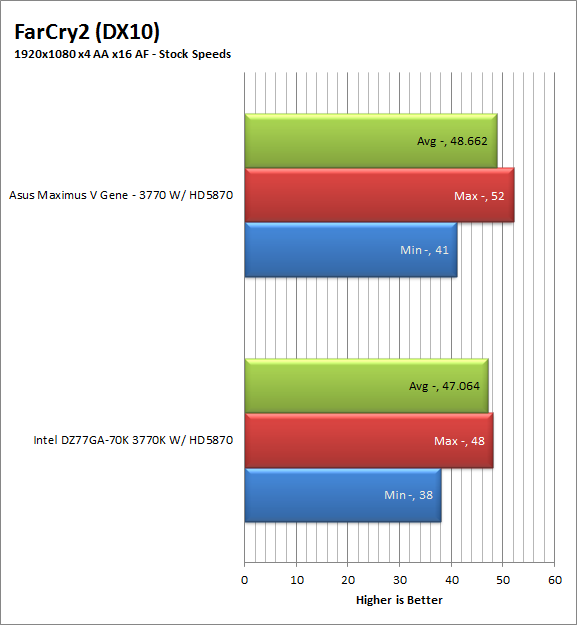
For FarCry2 the GMA4000 is not up to the task; of course it was never meant to push high-end games. We are happy to see the Maximus V Gene squeeze out a little more performance running the IGP, but it is not consistent. Gaming with the HD5870 really brings out the performance of the V Gene though.
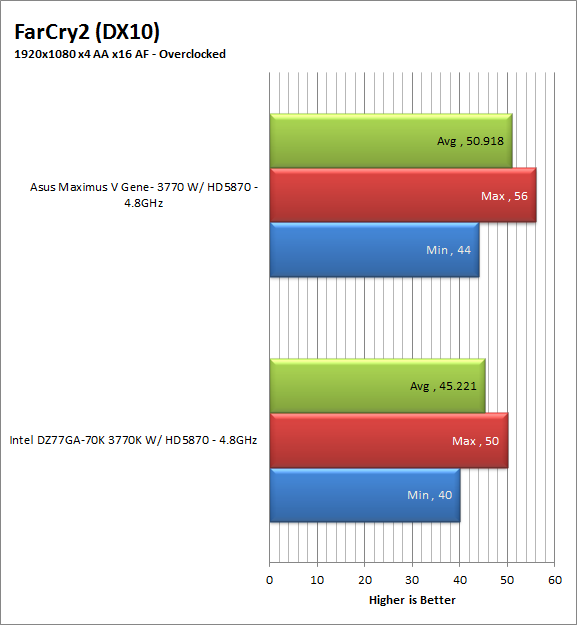
Crysis 2 DX11 –
Another sequel Crysis 2 follows up on two other Crysis games (making the title a little misleading). You take the role of a Force Recon Marine who is given a battle suit by a character named Profit (you will remember him from the other two Crysis games). From there you run around an Infected and Invaded New York City trying to survive and, of course, save the planet. For our testing we ran through the first “mission”. Settings are shown below.
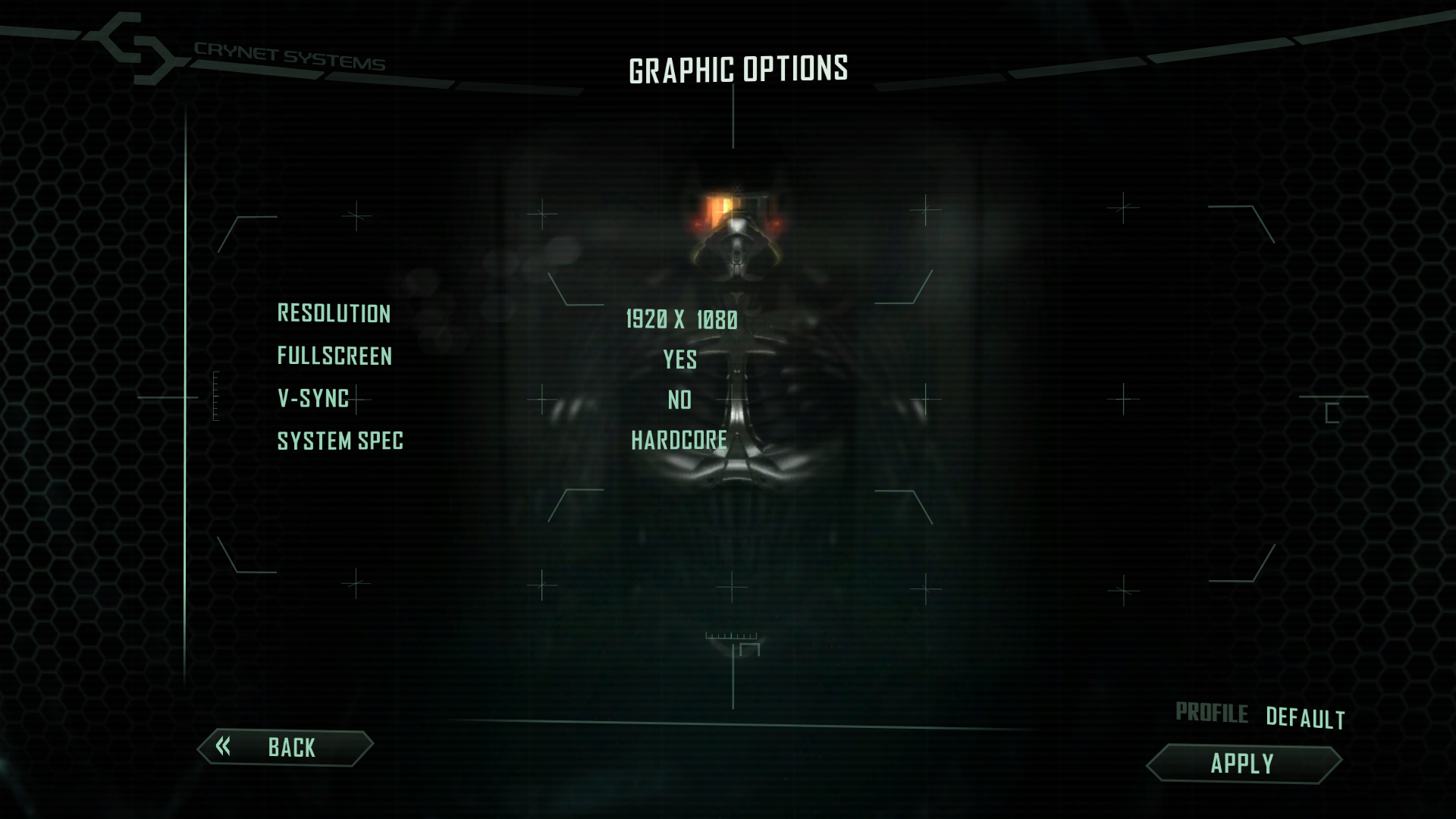

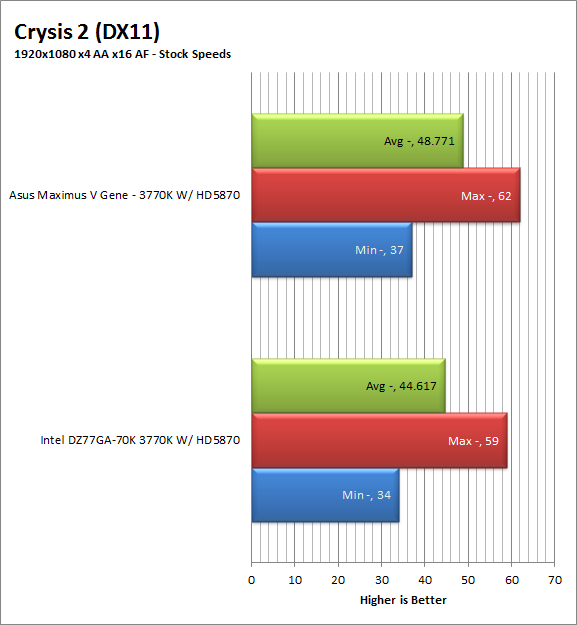
On the V Gene the GMA4000 struggles with Crysis 2 for some reason. The frame rate was much less than what we expected. With the HD5870 it was back to the top though as it managed to take the lead quite nicely.
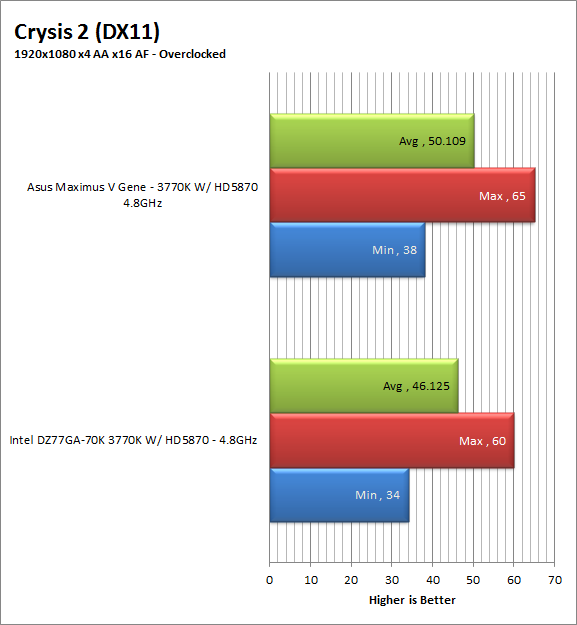
Gaming wrap-up -
Gaming on the Asus Maximus V Gene was good when using an add-in GPU. With just the GMA 4000 we did not see anything to get excited about. As we have said many times the GMA 4000 is not meant to play high-end games with although it is certainly more than enough for most mainstream games and probably many real time strategy games if you do not go crazy. It was when we dropped in the HD5870 that the Maximus V Gene really started to shine. We not only saw the improvement in gaming we also heard it from the SupremeFX III audio CODEC and Creative Labs enhancement software. It was a very nice experience.

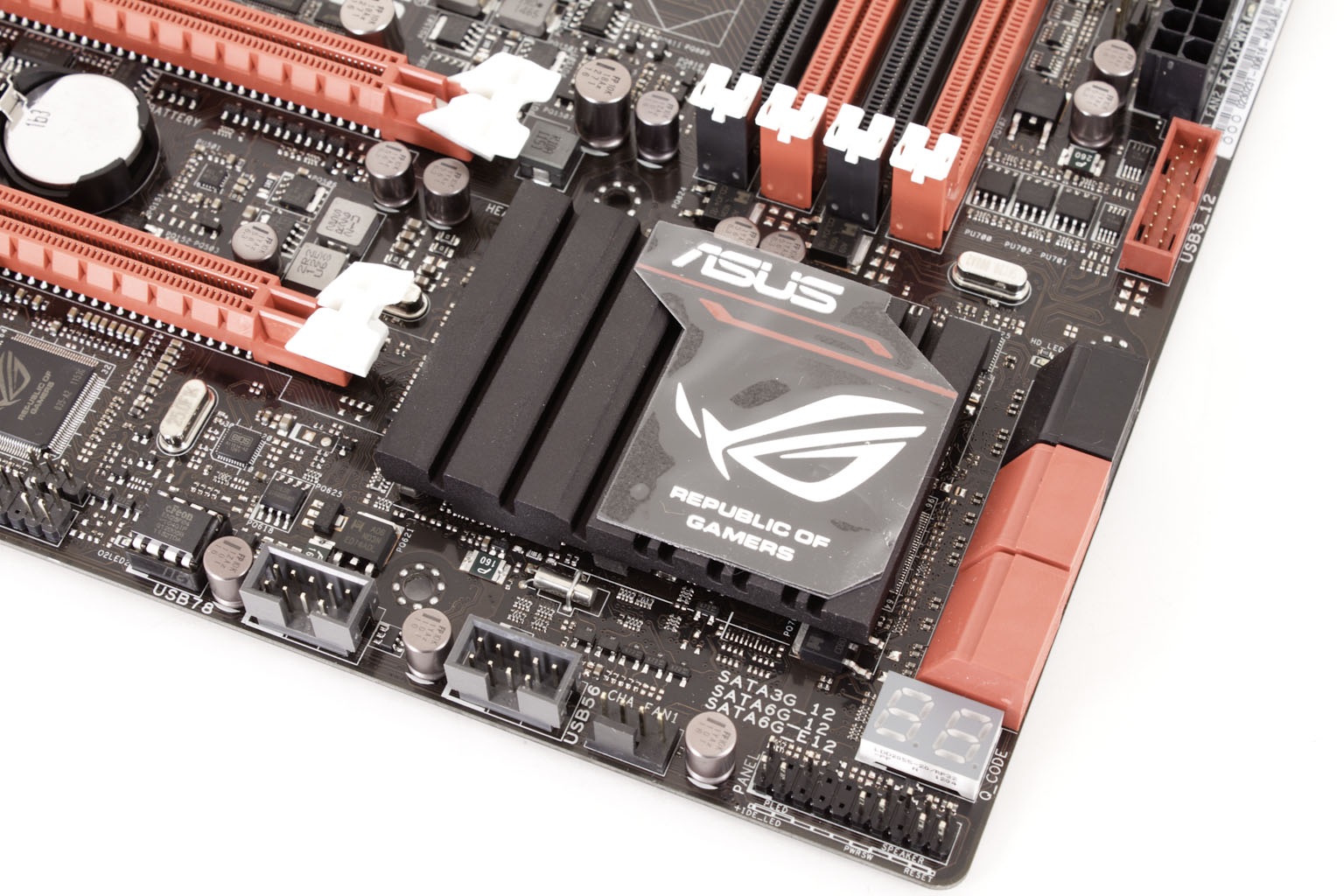 After seeing what new features Asus is bringing to the table with the
After seeing what new features Asus is bringing to the table with the 

